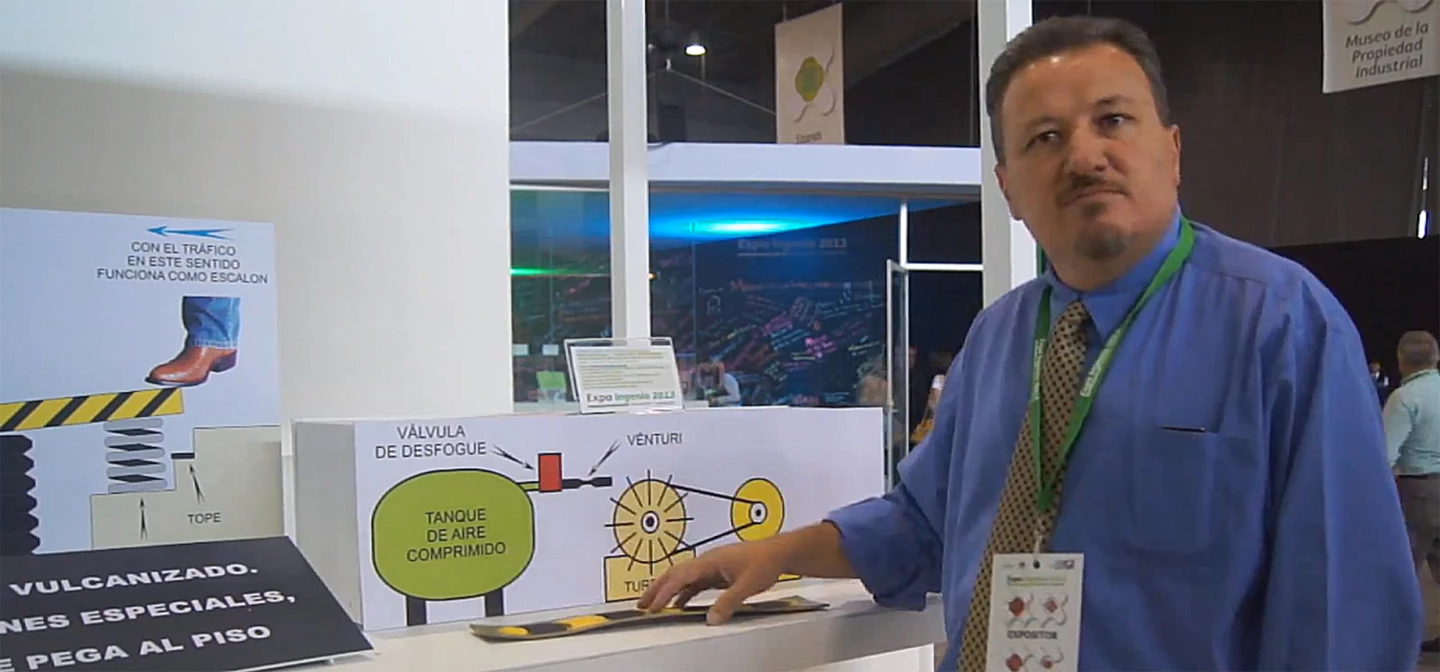Over the years, various researchers have developed systems in which the weight transferred through cars' wheels onto the road – or through pedestrians' feet onto the sidewalk – is used to generate electricity. These systems utilize piezoelectric materials, which convert mechanical stress into an electrical current. Such materials may be effective, but they're also too expensive for use in many parts of the world. That's why Mexican entrepreneur Héctor Ricardo Macías Hernández created his own rather ingenious alternative.
In Macías Hernández' system, small ramps made from a tough, tire-like polymer are embedded in the road, protruding 5 cm (2 in) above the surface. When cars drive over them, the ramps are temporarily pushed down.
When this happens, air is forced through a bellows that's attached to the underside of the ramp. That air travels through a hose, and is compressed in a storage tank. The stored compressed air is ultimately fed into a turbine, generating electricity.

The higher the amount of traffic where one of the ramps is present, the greater the amount of electricity that can be generated. Macías Hernández points out, however, that in lower-traffic areas, multiple ramps placed along the length of the road could be used to generate more electricity from each individual vehicle. He adds that the technology could also be used with pedestrian foot-traffic.
The system is currently still in development, with the support of the Mexican Institute of Industrial Property.
Source: Investigación y Desarrollo





